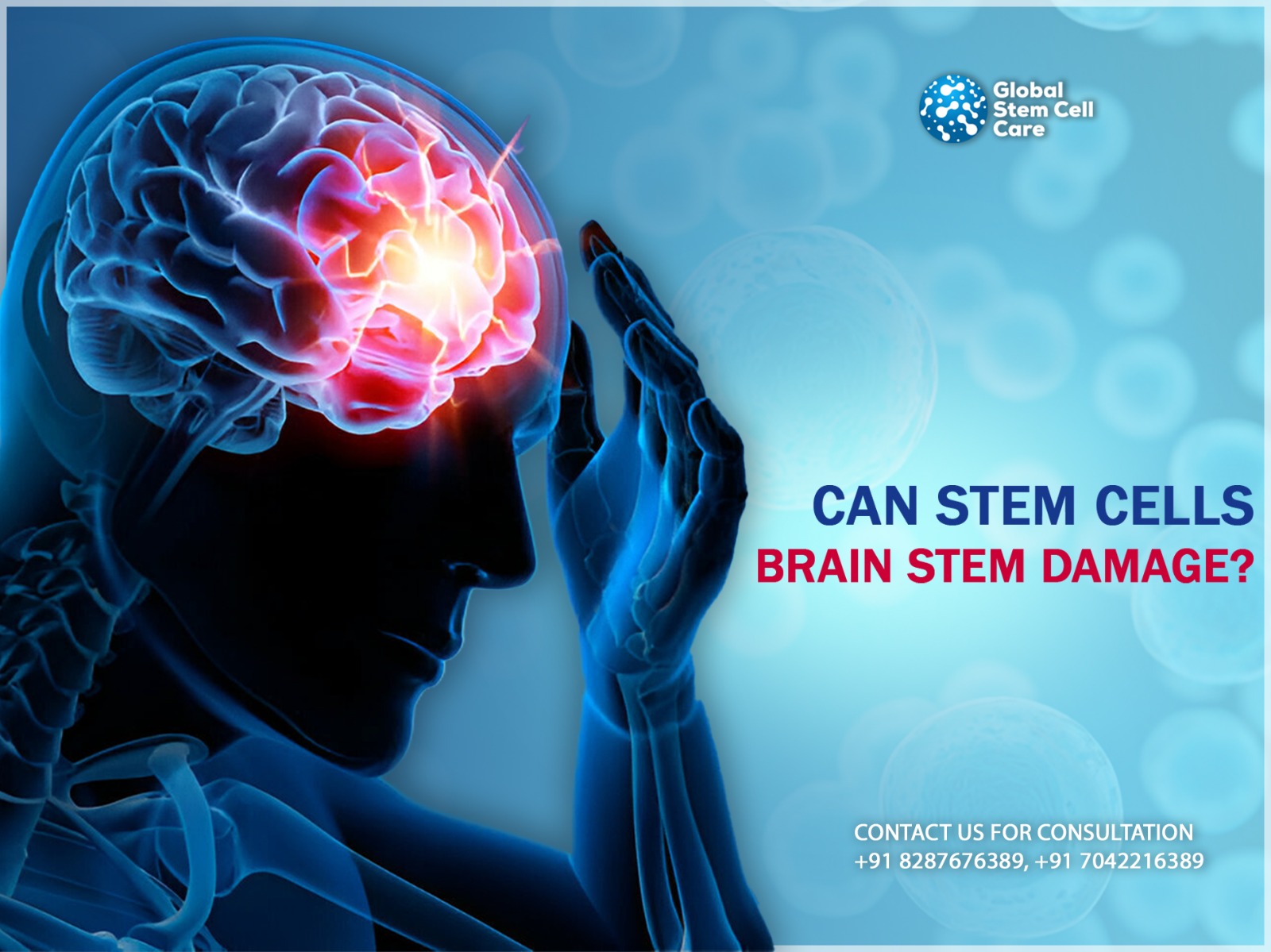The brain stem is an important part of the central nervous system, liable for controlling important functions like breathing, heart rate, and blood pressure. The damage to this area can have devastating effects, which can lead to severe neurological deficits and even death. Conventional treatments for brain stem damage are limited and typically focus on managing symptoms rather than repairing the underlying injury. However, medical advances in regenerative medicine, solely stem cell transplant for brain damage, offer new hope for repairing brain stem damage and restoring lost functions.
Overview of Brain Stem Damage
The brain stem is situated at the base of the brain, which connects the brain to the spinal cord and coordinates many automatic functions important for survival. This damage to the brain stem can be caused by the following reasons:
- Traumatic Brain Injury (TBI): This is physical trauma that may happen to a person due to accidents or falls.
- Stroke: It can be an interruption of blood flow to the brain stem.
- Tumors: The growth of abnormal cells in or near the brain stem.
- Infections: Bacterial or viral infections can also affect the brain stem.
- Degenerative Diseases: It is a conditions such as multiple sclerosis or ALS that progressively damage the brain stem.
These symptoms of brain stem damage can involve difficulties in breathing, swallowing, and speaking, paralysis, loss of consciousness, and chronic impairment of motor and sensory functions.
Hope of Stem Cell Therapy
Stem cells are different in their ability to develop into different types of cells in the body. This regenerative potential makes them an important option for repairing damaged tissues, such as those in the brain stem.
There are many types of stem cells being researched for their potential to treat brain stem damage:
- Embryonic Stem Cells (ESCs)
These types of cells can be differentiated into any cell type, providing great potential for regenerative therapies.
- Induced Pluripotent Stem Cells (iPSCs)
These are adult cells reprogrammed to behave like embryonic stem cells, offering a versatile and ethical alternative to ESCs.
- Mesenchymal Stem Cells (MSCs)
It is typically found in bone marrow and adipose tissue. Mesenchymal stem cells can differentiate into a variety of cell types and have anti-inflammatory properties that aid tissue repair.
How does the Stem Cell Repair Brain Stem?
Stem cells can typically repair brain stem damage through several means:
- Cell Replacement: Stem cells can differentiate into neurons and glial cells, promoting replacement in the brain for those lost due to injury or disease.
- Neuroprotection: These stem cells can release growth factors and other molecules that protect existing neurons from getting further damaged.
- Modulation of Inflammation: Stem cells can also modulate the immune response, reducing inflammation and creating a more favorable environment for healing.
- Promotion of Axonal Growth: These cells can stimulate the growth of axons, the long projections of neurons that transmit signals, facilitating the connections of neural circuits.
Research & Clinical Trials
Studies into the use of stem cells for brain stem cell treatment repair are ongoing, with many promising research and clinical trials.
- Preclinical Studies: The animal models have demonstrated that stem cell transplantation can lead to the regeneration of damaged stem tissue and the restoration of some lost functions.
- Clinical Trials: Some human trials are in the initial stages but are showing encouraging results. Patients with stroke-related brain stem damage have received stem cell transplants, and preliminary findings suggest improvements in motor and cognitive functions.
Future Directions
The future of stem cell therapy for brain stem damage lies in ongoing research and technological advancements. The main topics to concentrate on are:
- Optimizing Cell Types & Delivery Methods
It is refining techniques to make sure that the types of stem cells are delivered to the precise locations of injury.
- Improving Survival & Integration
The developing strategies to improve the survival and integration of transplanted stem cells into existing neural networks.
- Combining Therapies
Exploring the blend of stem cell therapy with other treatments, like neurorehabilitation and pharmacological interventions, to improve results.
The Bottom Line
Stem cell transplants for brain injury represent promising results in treating brain stem damage. While significant challenges remain, continuous research and clinical trials are paving the way for new regenerative treatments that could transform the lives of those affected by these devastating conditions. With the ongoing advancement, the promise of repairing brain stem damage and restoring lost functions may soon become a reality. If you are interested in learning more about the Stem cell transplant, consult with Global Stem Cell Care experts today to know more.
